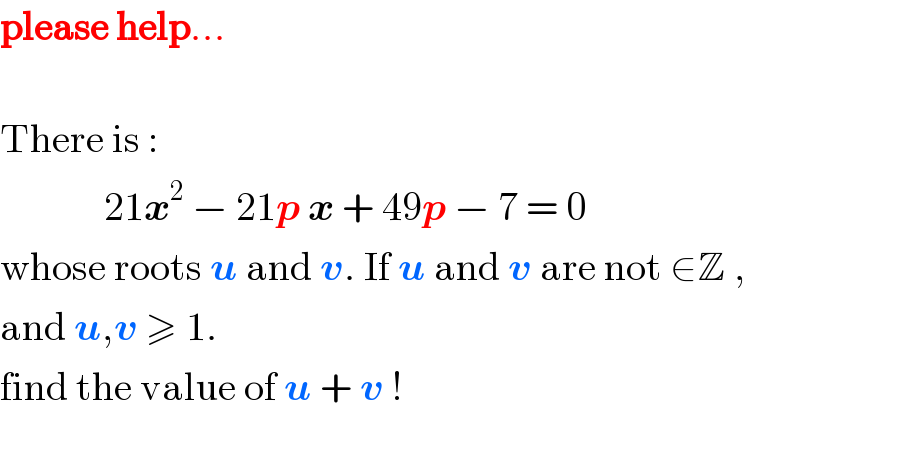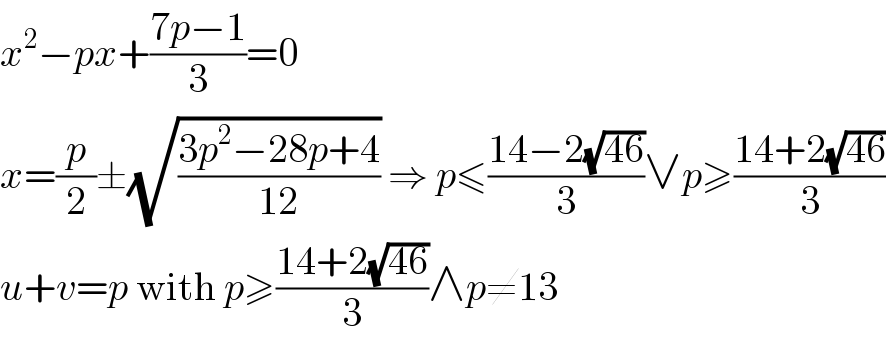
Question and Answers Forum
Question Number 49186 by afachri last updated on 04/Dec/18

Commented by MJS last updated on 04/Dec/18

Commented by afachri last updated on 04/Dec/18

Commented by mr W last updated on 04/Dec/18

Commented by afachri last updated on 04/Dec/18

Answered by MJS last updated on 04/Dec/18

